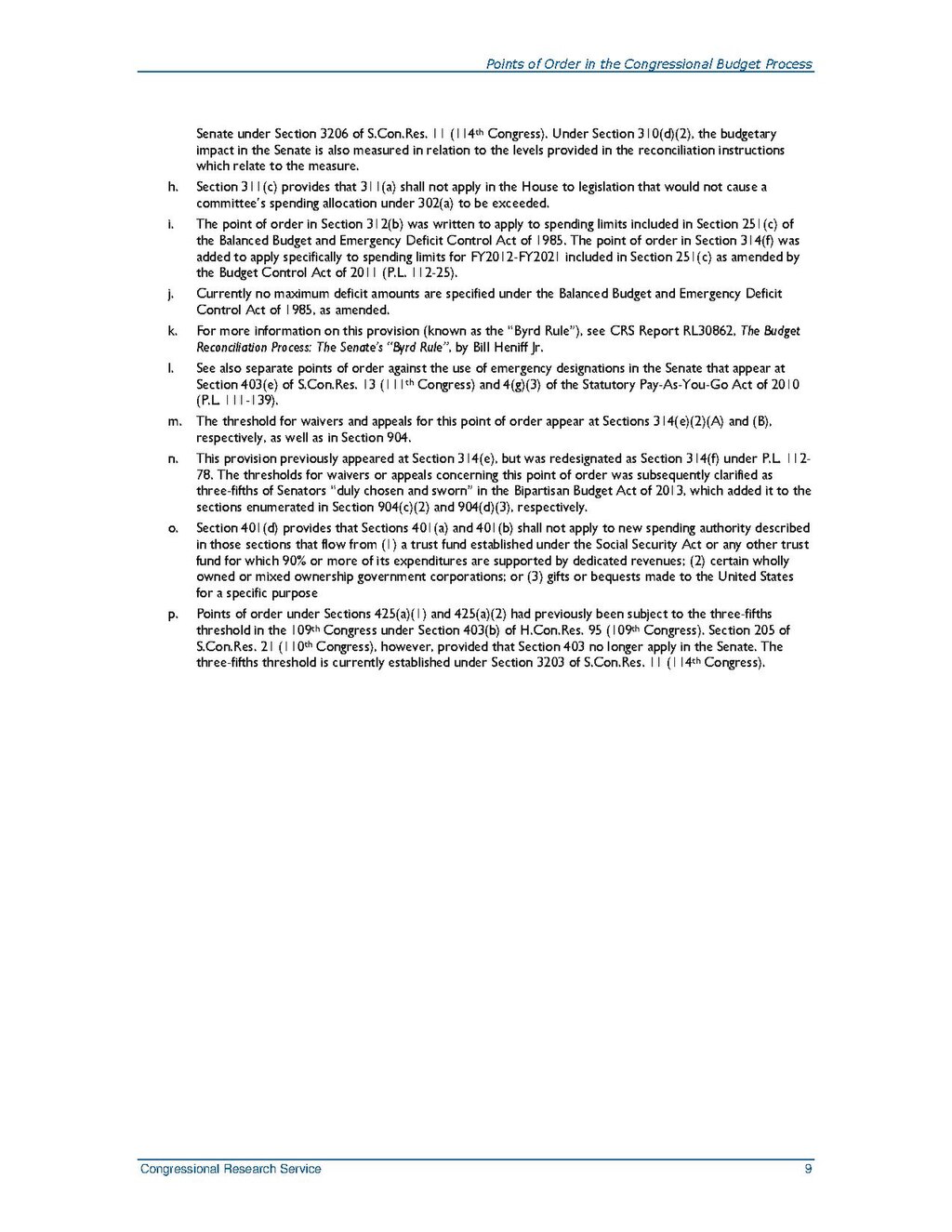Points of Order in the Congressional Budget Process
|
Senate under Section 3206 of S.Con.Res. 11 (114th Congress). Under Section 310(d)(2), the budgetary impact in the Senate is also measured in relation to the levels provided in the reconciliation instructions which relate to the measure. | |
| h. | Section 311(c) provides that 311(a) shall not apply in the House to legislation that would not cause a committee’s spending allocation under 302(a) to be exceeded. |
| i. | The point of order in Section 312(b) was written to apply to spending limits included in Section 251(c) of the Balanced Budget and Emergency Deficit Control Act of 1985. The point of order in Section 314(f) was added to apply specifically to spending limits for FY2012-FY2021 included in Section 251(c) as amended by the Budget Control Act of 2011 (P.L. 112-25). |
| j. | Currently no maximum deficit amounts are specified under the Balanced Budget and Emergency Deficit Control Act of 1985, as amended. |
| k. | For more information on this provision (known as the “Byrd Rule”), see CRS Report RL30862, The Budget Reconciliation Process: The Senate’s “Byrd Rule”, by Bill Heniff Jr. |
| l. | See also separate points of order against the use of emergency designations in the Senate that appear at Section 403(e) of S.Con.Res. 13 (111th Congress) and 4(g)(3) of the Statutory Pay-As-You-Go Act of 2010 (P.L. 111-139). |
| m. | The threshold for waivers and appeals for this point of order appear at Sections 314(e)(2)(A) and (B), respectively, as well as in Section 904. |
| n. | This provision previously appeared at Section 314(e), but was redesignated as Section 314(f) under P.L. 112-78. The thresholds for waivers or appeals concerning this point of order was subsequently clarified as three-fifths of Senators “duly chosen and sworn” in the Bipartisan Budget Act of 2013, which added it to the sections enumerated in Section 904(c)(2) and 904(d)(3), respectively. |
| o. | Section 401(d) provides that Sections 401(a) and 401(b) shall not apply to new spending authority described in those sections that flow from (1) a trust fund established under the Social Security Act or any other trust fund for which 90% or more of its expenditures are supported by dedicated revenues; (2) certain wholly owned or mixed ownership government corporations; or (3) gifts or bequests made to the United States for a specific purpose |
| p. | Points of order under Sections 425(a)(1) and 425(a)(2) had previously been subject to the three-fifths threshold in the 109th Congress under Section 403(b) of H.Con.Res. 95 (109th Congress). Section 205 of S.Con.Res. 21 (110th Congress), however, provided that Section 403 no longer apply in the Senate. The three-fifths threshold is currently established under Section 3203 of S.Con.Res. 11 (114th Congress). |
Congressional Research Service
9
